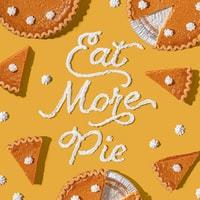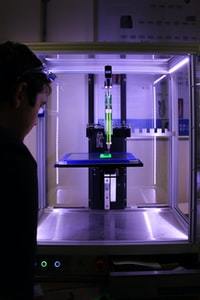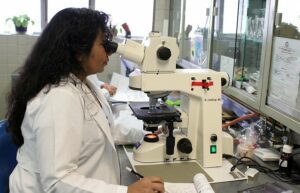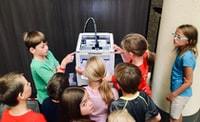3D printing and the food industry will be around for a while. It is a marriage made in heaven. Still, it is only recently that technology has begun to be used in the food industry. This new application of 3D printing technology is often referred to as “food printing” or “culinary 3D printing”. While some may think this is just a gimmick, there are many potential benefits of using 3D printers in the food industry.

3D printing has been around for a time but only recently started to be used in the food industry. 3D printers can create intricate designs with high accuracy, making them ideal for creating detailed cakes or other pastries. With the ability to print complex shapes and precisely control nutrition content,
3D printers offer new possibilities for creating healthy and delicious meals. While there are still some challenges to overcome before 3D-printed food becomes commonplace, it is exciting to imagine this technology’s potential to transform the way we eat.

This new application is often called “food printing” or “culinary 3D printing.”
3D printing is on the rise in popularity, and its potential in the food industry is only beginning to be explored. This new application is often referred to as “food printing” or “culinary 3D printing”.
While a few companies are already experimenting with this technology, it has yet to impact the industry significantly. But that may soon change. As 3D printers become more sophisticated and affordable, we’ll likely see more and more businesses implementing them into their operations.

Many Potential Benefits of Using 3D printers in the Food Industry include:
3D printing is an exciting new technology that has the potential to revolutionize the food industry. There are many potential benefits of using 3D printers in the food industry, including:
- 1. It has increased accuracy and precision in food production.
- 2. The ability to create customized and unique foods.
- 3. Reduced wastage of ingredients and resources.
- 4. Reduced packaging and shipping.
- 5. Increased food safety.
- 6. Food production in remote areas.
- 7. Providing fresh food in remote areas.
- 8. Better nutritional value of food.
3D food printers could be used, for example, to:
3D printing can also be used to create customized food products. For instance, creating food items with specific nutritional content.
- 4. Greater control over the food production process.
- 5. Reduced food preparation time.
- 6. Increased speed and efficiency in food production.
- 7. Increased control over the quality of the food product.
There are concerns that the use of 3D printing technology may lead to:
1. Unsafe food production.
2. A lack of standardization in food production.
3. A loss of traditional craftsmanship in food preparation.
4. Improved communication between designer and manufacturer.
5. Delivery of consistent and unified foods.
Best 3d printer for beginners. Flashforge Adventurer 3, which sold 100,000+ units, allows you to get started with 3d printing quickly and effectively.
There are also potential challenges to using 3D printers in the food industry. These include: 3D printing is an exciting new technology that has the potential to revolutionize the food industry. There are many potential challenges to using 3D printers in the food industry, including:
Increased efficiency in food production, from the farm through to the table.
- Improved control over the production process.
- The ability to create complex shapes and textures that would be difficult or expensive to develop otherwise.
- The ability to create foods with a long shelf life.

Potential Challenges and Barriers to Adoption include:
- High costs for 3D printers.
- Challenges with food safety and quality.
- The need for a culture change in the food industry.
Recipes for possible future foods such as animal products are being developed using a mixture of 2D and 3D printers. To create a better-standardized product that could be mass-produced.
By customizing the food that is cooked, this technology can help combat malnutrition. Animal products such as eggs and fish are already being fabricated on a small scale by recycling animal products leftover from slaughter.
- Education to consumers and the food industry.
- Lack of standard terms, measurement methods, and regulations.
As food safety issues increase, there is a growing demand for large-scale end-to-end traceability systems, including 3D food printing. Many problems will arise as current food safety regulations are being addressed for 3D food printing. Start [HERE] 3D printing!
3D printing can be used to enhance existing food products. For example, a baker could print sugar sculptures with a 3D printer. There are also companies like NutritionFrost, which can print onto food, such as Froot Loops, to create 3D designs.
Numerous start-ups and projects are working on creating food that is 3D printed. For example, Solun Food 3D publishes food and builds various desserts using a 3D printer.

The Ability to Create Custom Foods
People have been using 3D printers to create chocolate and other sweet treats for a while. But what about savory foods? The food industry is experimenting with 3D printers that can create custom pasta shapes, burgers, and pizzas. This technology can potentially change the way we think about food production. Mass customization is becoming the norm instead of mass-producing the same thing in massive amounts.
Flashforge Resin 3D Printer series gets a 6K upgrade! Expect higher print precision & larger build volume with Flashforge Foto 9.25 6K.
3D printers are used by NASA and companies like Boeing to build parts. Now, these machines are becoming increasingly popular among hobbyists and homeowners. 3D printers can be used to create unique figurines, working parts, and design essentials.

You can learn how to build your 3D printer at home. Alternatively, you can purchase one and get started.
Researchers are developing 3D printers that can print edible circuits. The technology won’t be available for the home market for a while yet. But when it does hit the market, people will be able to create customized foods with electronic components inside easily.

3D printing of Everyday Household Items
Making DIY household items is fun, but it can be a bit of a messy affair. “The sky is the limit for 3D printing,” said a spokesperson for 3D Systems, one of the leaders in innovation in this industry.
“It’s already being used to make everything from parts, breakable toys, and items you find on the bottom shelf at the drug store to food items. And even living cells. It could reduce food waste, improve eating habits, and shorten the time between when food is harvested and when it’s eaten.”

Customized Healthcare
3D printing tech can be used to create prosthetics and other medical devices. But 3D printing can also be used for customized healthcare. Doctors can use 3D printers to create customized mouth guards and splints for broken bones and other injuries. Start [HERE] 3D printing!
It will also make you double-take when you see a tray of ravioli from your kitchen printer—the ability to print out household objects. Imagine a world where you can print out your appliances and furniture in your living room. It’s not as far-fetched as it sounds. Makers and designers like Taylor Araujo and Lee Magleby already make custom household furniture.
The ability to print food with specific nutritional values
3D printing can change the food industry by allowing people to print food with specific nutritional values. This would be a game-changer for those with dietary restrictions or allergies and athletes who need to meet particular nutrient goals. Imagine being able to print a piece of cake that contains precisely the right amount of protein, carbs, and fat for your post-workout meal. Or a pizza that is perfectly tailored to your macro requirements.

The Ability to Print Medicine
The pharmaceutical industry is constantly on the lookout for the next big drug. Still, the costs of developing new drugs don’t happen as often as possible. One of the potential ways to reduce this cost is to use 3D printing to make tiny batches of new medicines.
3D food printers could also offer a convenient and cheap way to take nutritional supplements. Instead of packing pills or protein powders, you could fill your food before a workout, which is a much more palatable way to consume them.
Faster Food Delivery
Suppose you’ve ever ordered food online only to have it arrive 30 minutes late. In that case, you know the frustrations of waiting for delayed food delivery. With 3D food printing, why would we have to wait for food? Or a yummy delicious chocolate bar containing just the right vitamins and minerals.
The ability to effectively 3D print food at home
3D printing could completely revolutionize the food industry by allowing people to print food at home. If a 3D printer could create healthy and delicious food, people would not need to go out to eat, which would cause a decline in the food service industry. Or steak for a paleo diet.
The Ability to Print Drugs
3D printing can also be used to make drugs. It seems like something from a bad sci-fi movie, but it’s real. In 2014, a researcher chemically synthesized a strand of DNA and sent it to a machine in another room. It was printed and assembled into a virus that could infect bacteria.
Drug-delivery Devices
This one sounds like science fiction, but the potential is real. Researchers can now create 3D devices that house drugs and print them out in precise locations. This means that we may be able to print devices that can deliver drugs to specific organs and even cells. For example, a patient with Type 2 diabetes may be able to print a device that has insulin to the pancreas.

The Ability to Print Food with Specific Nutritional Values
3D printing can change the food industry by allowing people to print food with specific nutritional values. This would be a game-changer for those with dietary restrictions or allergies and athletes who need to meet particular nutrient goals. Start [HERE] 3D printing!
Imagine being able to print a piece of cake that contains precisely the right amount of protein, carbs, and fat for your post-workout meal. Or a pizza that is perfectly tailored to your macro requirements.
- The ability to print drugs
3D printing can also be used to make drugs. It seems like something from a bad sci-fi movie, but it’s real. In 2014, a researcher chemically synthesized a strand of DNA and sent it to a machine in another room. It was printed and assembled into a virus that could infect bacteria.
- Drug-delivery Devices
This one sounds like science fiction, but the potential is real. Researchers can now create 3D devices that house drugs and print them out in precise locations. This means we may be able to print devices that can deliver drugs to specific organs and even cells. For example, a patient with Type 2 diabetes may be able to print a device that has insulin to the pancreas.
- The ability to print medicine
The pharmaceutical industry is constantly on the lookout for the next big drug. Still, the costs of developing new drugs don’t happen as often as possible. One of the potential ways to reduce this cost is to use 3D printing to make tiny batches of new medications.3D food printers could also offer a convenient and cheap way to take nutritional supplements. Instead of packing pills or protein powders, you could fill your food before a workout, which is a much more palatable way to consume them.
Faster food delivery
Suppose you’ve ever ordered food online only to have it arrive 30 minutes late. In that case, you know the frustrations of waiting for delayed food delivery. With 3D food printing, why would we have to wait for food? Or a yummy delicious chocolate bar containing just the right vitamins and minerals.

The Ability to Effectively 3D print Food at Home
3D printing could completely revolutionize the food industry by allowing people to print food at home. If a 3D printer were able to create, people would not need to go out to eat, which would cause a decline in the food service industry. Or steak for a paleo diet.
Start [HERE] 3D printing!
The Ability to Print Food in Difficult or Dangerous Environments
3D printing is revolutionizing the food industry. 3D printing provides a new way to combat hunger and malnutrition with the ability to print food in difficult or dangerous environments. By making food more accessible, 3D printing is changing how we think about food production and distribution.
3D-printed food is an exciting new trend. 3D printers have been used in food production, especially on small scales. But it is only recently that 3D printers have become affordable and available to consumers. By lowering the cost barrier, 3D printing makes the technology more accessible.
3D printing is a relatively new technology that is still evolving. Just as the technology is still being developed, the regulations governing it are also written. 3D printed food can change how we think about food production and distribution. 3D-printed foods can be designed to meet the specific needs of an individual. Can you imagine a world where you can print your favorite snack, diet, or allergy-free meals? The power to design your food opens up a wealth of possibilities.
3D printed Food To Look Like Traditional Food.
What exactly is 3D-printed food? Harvard printed mini pizzas as a proof of concept. The idea was to make 3D printing more attractive to more people by printing more tasty food. The future of food printing is still unknown, but certainly, 3D-printed food is not the presentation of the end.

Some supermarkets, such as Tesco, are beginning to explore the possibilities that 3D printing offers. The company plans to start selling 3D printers in its stores soon. The chances of 3D printing are endless and may be the most significant innovation of the century. Furthermore, with the ability to print food in the comfort of one’s home, this could be one step closer to an actual food replicator.
3D printing food creates a three-dimensional solid object of nearly any shape from a digital model. There are several technologies currently being used to 3D print food. These technologies include extrusion, inkjet, stereolithography, and direct metal laser sintering. 3D printing is starting to be used for manufacturing -The ability to print replacement parts for machinery 3D printing is becoming a viable way to manufacture some industrial parts.
Start [HERE] 3D printing!
This post was proofread by Grammarly.
We would love to know what you think. Would you do us a favor and leave a comment if you have a moment?
It enables us to improve upon everything we do.
We’ve made leaving a comment or question easy! Just go below.
Some of the links in this article are affiliate links. If you were to buy something after clicking on one of these links, I would get a small commission.
Thanks for being part of the community!
Bullwinkle
Hello,
As an eCommerce seller, the first physical touchpoint you’ll have with a customer is when your package arrives at their door, an impactful impression is critical.
Fulfillment marketing, a cutting-edge solution crafted by my friends over at The Fulfillment Lab, is designed to make the unboxing experience memorable by bringing marketing and fulfillment together at scale!
With this strategy, you can create a unique order fulfillment experience using data you’re already capturing—without sacrificing speed or scalability. It makes it possible to:
- Build brand recognition. With increasing competition for eCommerce businesses, you need a way to differentiate and build brand recognition. Fulfillment marketing is that solution!
- Tailor the customer experience. Personalize the fulfillment experience to each buyer using marketing data you’re already collecting—delivering a unique customer experience that’ll leave a lasting impression.
- Create brand advocates. Turn one-time buyers into repeat buyers and loyal advocates for your brand. You make it easier to attract new customers driving additional revenue from repeat sales while expanding your new customer base.
I figured you’d like to do this in your organization, so I’m connecting you with The Fulfillment Lab! Click this link [HERE] to get started with their fulfillment services today, or contact them directly if you have more questions.
The Fulfillment Lab, 5136 W Clifton St, Tampa, FL 33634, (813) 444-3455




